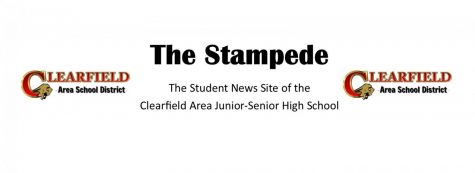Dual enrolling at Clearfield: The past, present, and future

Clearfield High School students have the opportunity to dual enroll classes taken during the normal academic year and receive credit through a university.
February 25, 2019
An interesting opportunity for students at the Clearfield Area Junior-Senior High School, dual enrollment has given many the chance to work at a collegiate level while being primarily enrolled at a high school level.
Dual enrollment is encouraged by many of the people working to help students succeed within the school. However, it is often called into question how effective dual enrollment is, how well credits transfer, and the way dual enrollment can influence a student’s school life.
A current student at Clearfield Area Junior-Senior High, Taylor Welker is receiving an associate degree through Pennsylvania Highlands Community College. In her senior year, she will graduate with around 30 transferrable credits from the college. Justin Olah, a 2018 graduate from Clearfield and current student of Thiel College, received a total of 60 dual enrollment credits during his high school career.
Ms. Welker is hoping to attend Slippery Rock University with a major in accounting. Mr. Olah is an engineering major. Despite pursuing very different paths, the two both worked in high school to receive associate degrees. Olah transferred a total of 57 credits and Welker is optimistic that her credits will transfer well when her transcript is shared.
Dual enrollment has several perks and benefits for students. Dr. Spaid emphasizes that a large advantage to dual enrolling high school is the cost. A college level course in high school costs around $200 and could cost upwards of $1,500 in college. She also provides that dual enrollment can help a student graduate college early.
A benefit that Mr. Olah found during the application process was that he was in high regard with many schools. He says that when applying, his associate degree seemed to be of greater value than a 4.0 GPA.
Welker, Olah, and Spaid agree that dual enrolling in high school can help to alleviate some of the pressures of general education courses in college. Online courses were taken by Olah and Welker, who admit that juggling online courses with normal courses was one of the very few difficulties of being associate students. Normal dual enrollment did not require any extra work and ultimately was just getting college credit for a class that everyone else was already taking.
Olah offers that dual enrolling helped him work harder in high school and turned unproductive time into work time that helped him get ahead. Welker says that dual enrolling challenged her to take harder classes that looked better on a college application.
Both students found that dual enrolling was an excellent opportunity for them to take advantage of and recommend it as an option for any student who is able. The cost is minimal, and the workload is not much greater, yet students are often apprehensive to dual enroll. Dr. Spaid says that any student who is interested in learning more about dual enrollment should schedule a visit with her in the guidance office.

